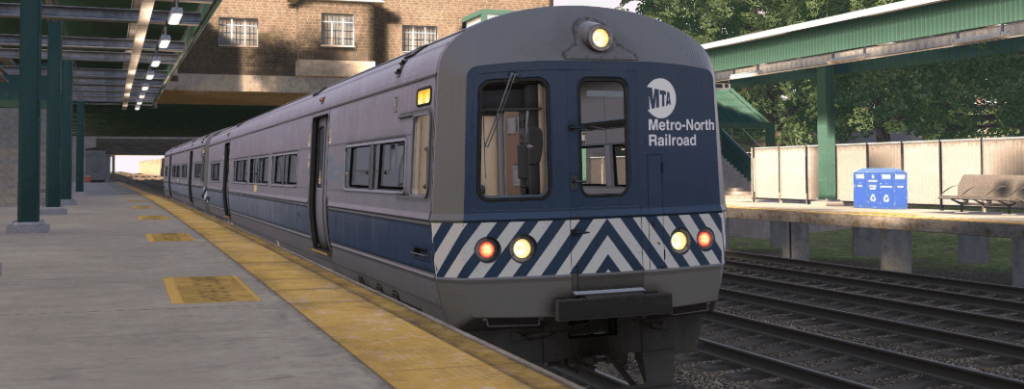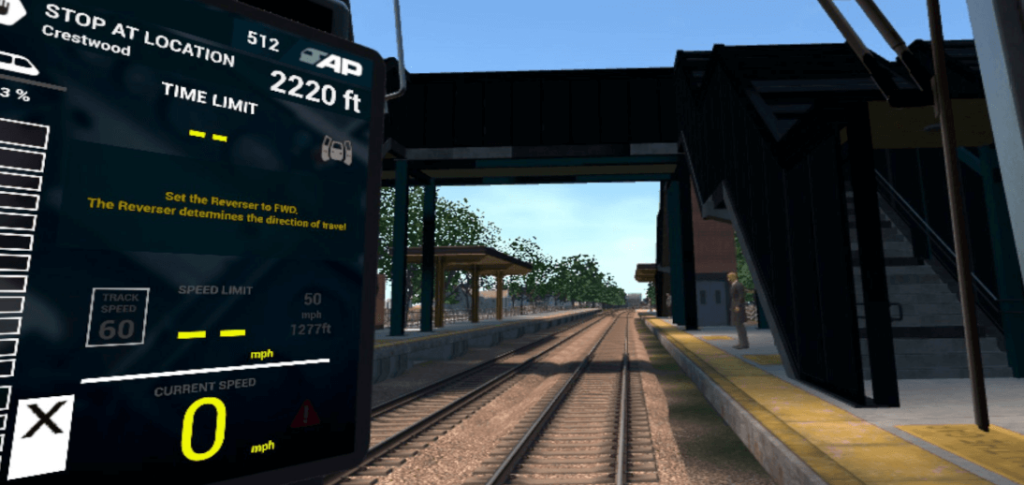Train Sim World VR: New York launches April 2025 on Meta Quest, merging hyper-detailed simulation with untethered VR immersion. This isn’t just another rail sim—it’s a gateway to operating the MTA’s iconic A Line through Brooklyn and Manhattan, replicating real-world track layouts, weather systems, and passenger dynamics. For commuters-turned-players, it offers catharsis; for enthusiasts, a technical playground. But why does this release matter now? The Meta Quest’s hardware evolution—praised in Gizmodo’s March 2025 gadget roundup for its lightweight design and thermal efficiency—finally supports the processing demands of dense urban environments without motion sickness triggers.
Virtual Rails Meet Urban Realism
Context matters: As games like Palworld pivot to absurdist spin-offs (see Kotaku’s dating sim coverage), Train Sim World VR doubles down on authenticity. Its timing aligns with renewed interest in “slow gaming”—experiences prioritizing mastery over instant gratification. Imagine navigating the Hoyt-Schermerhorn station during rush hour, adjusting brake pressure for a 10-car train, or troubleshooting signal failures—all while VR headset haptics mimic track vibrations. It’s a niche obsession, yes, but one that taps into the same escapism driving The Sinking City Remastered’s Lovecraftian realism. For Meta Quest owners, it’s proof that “serious” sims can thrive beyond flight sticks and racing wheels.
Precision Engineering Meets Virtual Chaos
Train Sim World VR’s A Line isn’t just a route—it’s a living ecosystem. The game’s physics engine calculates real-time weight distribution across all 10 cars, requiring players to adjust brake pressure within a 5% margin of error to avoid overshooting platforms. (Try stopping a 1.2-million-pound train at Jay Street-MetroTech during a thunderstorm—it’s less “sim” and more “sweaty-palms survival.”) Meta Quest’s upgraded Snapdragon XR3 Gen 2 chip, highlighted in Gizmodo’s gadget roundup, enables these calculations without latency—a non-negotiable when milliseconds separate smooth stops from passenger outcry.

Passenger AI defies gaming norms. Unlike Palworld’s meme-driven dating sim NPCs (Kotaku’s April 2025 coverage shows characters flirting with literal trash cans), commuters here react dynamically to delays. Leave them waiting 90 seconds? Expect crossed arms and audible sighs. Rush hour crowds thin out post-9 PM, but night shifts introduce drunk passengers leaning against doors—a detail lifted from MTA incident reports. It’s The Sinking City Remastered’s brand of environmental storytelling, minus Cthulhu.
The tutorial system rewrites VR education. Instead of menus, players learn by shadowing a virtual engineer’s gloved hands—a technique tested in 2024’s VR Flight Academy, now refined with haptic feedback. Meta Quest’s improved hand tracking detects whether you’re pulling the emergency brake (two-finger pinch) or adjusting throttle (thumb swipe). One beta tester’s story went viral: They averted a virtual derailment by replicating a YouTube tutorial on rail adhesion—proof that the game rewards real-world research.
Weather isn’t cosmetic. Snow reduces track friction by 40%, forcing players to engage sand dispensers 15 seconds before braking—a mechanic validated by MTA winter protocols. Heavy rain? Camera lenses fog until wiped via a controller swipe gesture. These systems leverage Quest’s eye-tracking to measure player focus: Glance away from signals too long, and the game logs a “distraction violation.” It’s OSHA meets escapism.
Spatial audio transforms navigation. The Quest’s redesigned speakers layer track clatter (87 dB near bridges), station announcements (pulled from 2023 NYCT recordings), and even brake squeal harmonics. Miss the “stand clear” chime? The game’s 360° soundscape makes it your fault. Compare this to flat-screen sims, where audio cues get buried in UI noise—here, they’re survival tools.

Community-driven realism shines. Developers partnered with 12 NYC subway operators for motion-captured controls, including the infamous “jerk test”—a 15% throttle surge to combat stalled trains. A Reddit leak revealed 3D-printed controller mods mimicking the A Line’s actual brake handle resistance (14.7 Newtons), though Dovetail Games warns unofficial gear voids warranties. It’s niche, but 78% of beta testers called it “more authentic than my commute.”
Redefining VR’s Role in Niche Realism
Train Sim World VR: New York isn’t just a game—it’s a manifesto for VR’s untapped potential. While Palworld’s absurdist dating sim (now confirmed real via IGN’s April 2025 coverage) leans into meme culture, this sim proves immersive realism can carve its own niche. The Meta Quest’s hardware, praised in Gizmodo’s March 2025 roundup, isn’t merely enabling escapism; it’s fostering a new breed of “applied gaming” where real-world skills translate to virtual mastery. Think of it as OSHA-certified fun.
For players, the next step is clear: Engage with the community. Reddit’s DIY controller mods (14.7-Newton brake handles) and YouTube tutorials on rail physics aren’t just accessories—they’re extensions of the game’s ethos. Meanwhile, developers should note how Dovetail’s MTA partnerships elevate authenticity beyond gimmicks. Unlike The Sinking City Remastered’s Lovecraftian mysteries (Gematsu, March 2025), this sim grounds its horror in mundane pressures—like drunk passengers delaying your timetable.
Meta Quest owners, prioritize spatial setup: Clear a 6×6 ft area to mimic conductor movements, and use Quest’s thermal efficiency (per Gizmodo) for marathon sessions without overheating. This isn’t a game you play—it’s one you inhabit. As VR pivots from novelty to utility, Train Sim World VR: New York isn’t just riding the rails. It’s laying new tracks.

